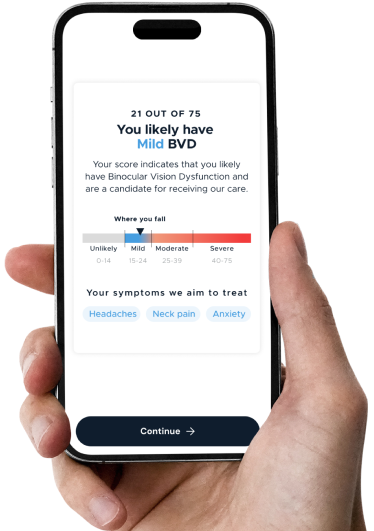Even with 20/20 vision, a child may struggle in school due to Binocular Vision Dysfunction (BVD), a condition where eye misalignment causes reading issues, headaches, and attention problems. Custom prism lenses can help correct the alignment and improve academic performance.
Your Child is Struggling in School – But Why?
Published on MetroParent.com | By Claire Charlton
The cause of your child’s learning difficulties may not be what you think. Two representatives from the NeuroVisual Medicine Institute offer insight.

When Elli Altman, the community outreach manager for the NeuroVisual Medicine Institute, talks with parents whose children struggle with reading, attention or coordination, she often tells them something no other health care provider has ever shared. She tells them their child may be struggling to see – not because their eyesight is poor, but because their eyes are not working smoothly together.
“Yesterday, I spoke with a mother of a very bright 7-year-old child. Gifted, in fact,” Altman says.
But the child’s reading comprehension was markedly inconsistent. At times, she could read and understand material far above her grade level, while at other times, this child struggled to grasp material below her own level.
“This mother shared with me that her child could read easily early in the day, but as the day progressed, the mom was met with a lot of tears and pushback,” Altman says.
This child’s eyes were struggling to work together as a team, causing her to overuse her eye muscles to maintain vision alignment. It was not only challenging for her to track and put together the words on the page, but she also experienced rapid fatigue in the muscles of her eyes.
“Much like when our biceps become fatigued with repetitive exercise, this is what happens throughout the day with overused eye muscles,” Altman says.
Diagnosing the condition
The condition, known as Binocular Vision Dysfunction, is a common one, affecting 10 percent of all people. However, among those with reading, learning or attention difficulties, the percentage climbs to 30-50 percent.
“Vision misalignments are subtle and difficult to diagnose,” says Mark Rosner, M.D., chief operating officer with the NeuroVisual Medicine Institute.
Misalignments can be present at birth and cause symptoms at any age, or they can be acquired by a concussion or an injury to the head – such as by colliding with another soccer player (or other sports-related activities), falling from a bicycle, or just slipping and falling and striking their head – even if the child does not lose consciousness.
What is surprising to parents is that this condition, as common as it is, is often missed by pediatricians and even eye doctors.
“You can’t see the vision misalignment by just looking into the eyes of someone affected,” Rosner says.
More often, the initial clue to this condition is the cluster of symptoms that confound parents, teachers and primary care physicians alike.
Headaches, anxiety, clumsiness, uncoordinated movements when running or walking and motion sickness – all potential symptoms of vision misalignment – are singularly treated, and it isn’t until they are considered as a cluster that the clues point to vision misalignment. Other symptoms include dizziness, neck pain, migraines, nausea, sensitivity to light, eye pain and poor depth perception.
Even a percentage of children who exhibit symptoms of ADD and ADHD could have vision misalignment. Routine schoolwork is frustrating to the child whose eyes cannot follow words across a single line of text, who simultaneously see and attempt to process two lines of text, or have blurred or double vision. Common reactions to this type of struggle could very well appear as a problem maintaining attention in the classroom.
What’s not surprising is that parents often say “that sounds just like my kid!”
Treatment
Parents who have concerns about their children’s struggles at school can use a simple screening tool called the BVDQ™ Assessment to learn if their child may suffer from vision misalignment (4-8 years old or 9 years-plus). A phone call is then made to explain the results, and if the screening tool indicates a potential issue, the next step would be a comprehensive evaluation with a NeuroVisual Medicine specialist who can diagnose and treat the vision misalignment.
Treatment is a pair of eyeglasses that are custom prescribed with prism lenses that help the misaligned eyes work together for improved vision. Because NeuroVisual specialists work with micro-prism lenses – prisms calibrated in increments that are a fraction of the prism units usually used by other prescribers – the lenses are more precise, leading to marked improvement and sometimes complete resolution of symptoms. Treatment is simple and immediately effective.
As pioneers in the field of treating vision misalignment, the NeuroVisual Medicine Institute is an educational center where eye care professionals from around the world are being trained to diagnose and treat vision misalignment.
“Vision misalignment is a common condition, and treating it is the answer for so many children’s challenges. I look forward to the time when everyone knows about it,” Rosner says.

